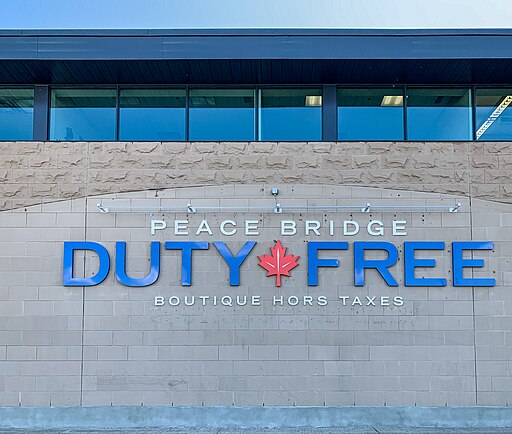“Duty-free” means no import taxes are paid, while “duty-paid” indicates taxes have been paid, typically included in the product’s price.
TL;DR Duty free Vs. Duty paid
Duty free products are often cheaper due to tax exemptions but come with certain limitations such as quantity restrictions and limited availability of brands or varieties.
Duty paid items have higher prices due to included taxes but offer a wider range of options and quantities without any purchase restrictions.
What is duty free?

Duty free shopping refers to the purchase of goods in designated areas, such as airports or international borders, where travelers can indulge in a wide range of products without paying the usual taxes and import duties.
Whether it’s perfumes, cosmetics, electronics, or luxury items – duty free shops offer an abundance of options for shoppers looking to score some great deals.
What is duty paid?
Duty paid refers to goods on which the appropriate duties or taxes have been paid. When you purchase duty paid items, you are paying for both the product and any applicable taxes or duties that have been levied by the government.
This means that these products are subject to all local taxes and customs duties.
Duty free Vs. Duty paid – Key differences
| Aspect | Duty-Free | Duty-Paid |
|---|---|---|
| Tax Payment | No import taxes or duties are paid. | Import taxes and duties have been paid, typically included in the product's price. |
| Availability | Available in designated areas like airports, seaports, and border crossings. | Available for purchase anywhere, with taxes included in the price. |
| Purpose | Often for travelers as a perk, encouraging international tourism. | Standard retail products available to the general public. |
| Cost | Usually lower prices due to tax exemption. | Prices include taxes and duties, potentially higher. |
| Examples | Duty-free shops in airports, duty-free alcohol, and perfume. | Regular stores selling everyday products with taxes included. |
Tax Payment
- Duty-Free: No import duties or taxes are paid when purchasing these goods.
- Duty-Paid: Import duties and taxes have already been paid, and they are typically included in the product’s price.
Availability
- Duty-Free: Duty-free items are available in designated areas such as airports, seaports, and border crossings.
- Duty-Paid: Duty-paid items are available for purchase anywhere, and taxes are included in the product’s price.
Purpose
- Duty-Free: Often targeted at travelers as an incentive to encourage international tourism.
- Duty-Paid: Standard retail products available to the general public.
Cost
- Duty-Free: Usually, prices are lower because they are exempt from import taxes and duties.
- Duty-Paid: Prices include taxes and duties, which can make them potentially higher than duty-free items.
Examples
- Duty-Free: Duty-free shops in airports, duty-free alcohol, perfumes, and luxury goods.
- Duty-Paid: Regular stores selling everyday products like groceries, electronics, and clothing, with taxes and duties included in the price.
Image Credits
Featured Image By – Coolcaesar at the English-language Wikipedia, , via Wikimedia Commons
Image 1 By – Kenneth C. Zirkel, CC BY-SA 4.0 , via Wikimedia Commons









